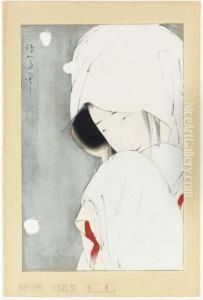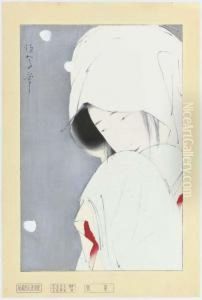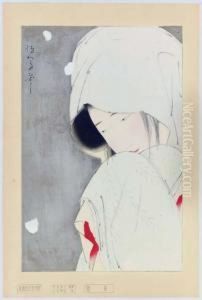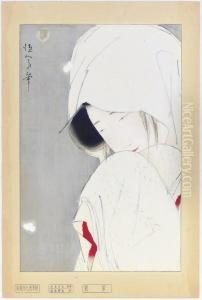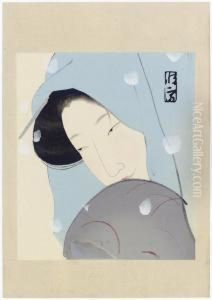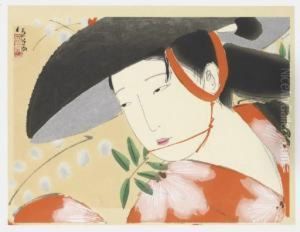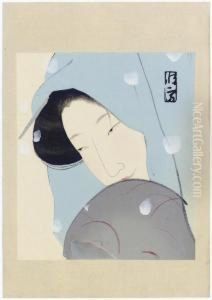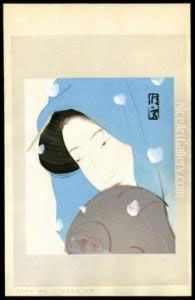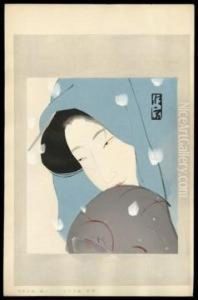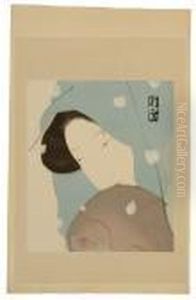Kitano Tsunetomi Paintings
Kitano Tsunetomi was a prominent Japanese painter and printmaker, born in Kanazawa, Ishikawa Prefecture, Japan, in 1880. He was known for his bijinga (paintings of beautiful women) in the Nihonga style, a traditional form of Japanese painting. Tsunetomi moved to Osaka at the age of 17, where he began studying art under the guidance of Kajita Hanko, who was a master of the Nihonga style.
Influenced by the romantic Shijo style, Tsunetomi developed his unique aesthetic that combined traditional techniques with a modern sensibility. His work was characterized by its vibrant colors and refined depiction of female beauty, with an emphasis on flowing lines and an elegant atmosphere. Throughout his career, Tsunetomi's bijinga became increasingly popular, and he received numerous commissions for his work, including illustrations for magazines and advertisements.
In 1911, he moved to Tokyo, where he found even greater success and was able to establish himself firmly within the art world. Tsunetomi's works were exhibited at prestigious venues, and he gained recognition for his artistic contributions. He also became involved in stage design, creating backdrops and costumes for the theater, which further enhanced his reputation.
During the 1920s, Tsunetomi began creating woodblock prints, known as shin-hanga. This medium allowed him to reach a wider audience and contributed to the revival of the ukiyo-e tradition, which had waned in popularity by the end of the 19th century. His prints often featured the same themes as his paintings, focusing on female beauty and elegance.
Kitano Tsunetomi's career was not without its challenges; he faced criticism from some quarters for being too Westernized in his approach, particularly in his use of perspective and shadow, which were not traditional elements in Nihonga painting. Despite these criticisms, he continued to work prolifically until his death in 1947. Tsunetomi left behind a rich legacy that influenced the world of Japanese art, and his works continue to be celebrated for their beauty and craftsmanship. His paintings and prints remain highly sought after by collectors and are exhibited in museums around the world, testament to his enduring impact on the field of Japanese art.

